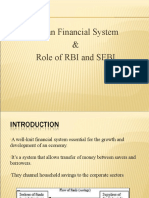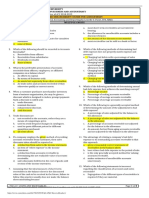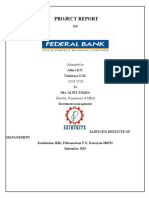0% found this document useful (0 votes)
107 views7 pagesMba FM3
The document discusses the classification of Indian financial markets into money and capital markets, detailing their features such as liquidity, risk, and regulatory frameworks. It defines financial instruments, their characteristics, and traces the development of India's financial system from ancient times to the present, highlighting key reforms and technological advancements. Additionally, it outlines the financial services industry, its various services, and identifies seven major types of financial institutions.
Uploaded by
Ravinder VarshneyCopyright
© © All Rights Reserved
We take content rights seriously. If you suspect this is your content, claim it here.
Available Formats
Download as PDF, TXT or read online on Scribd
0% found this document useful (0 votes)
107 views7 pagesMba FM3
The document discusses the classification of Indian financial markets into money and capital markets, detailing their features such as liquidity, risk, and regulatory frameworks. It defines financial instruments, their characteristics, and traces the development of India's financial system from ancient times to the present, highlighting key reforms and technological advancements. Additionally, it outlines the financial services industry, its various services, and identifies seven major types of financial institutions.
Uploaded by
Ravinder VarshneyCopyright
© © All Rights Reserved
We take content rights seriously. If you suspect this is your content, claim it here.
Available Formats
Download as PDF, TXT or read online on Scribd
/ 7

















































































